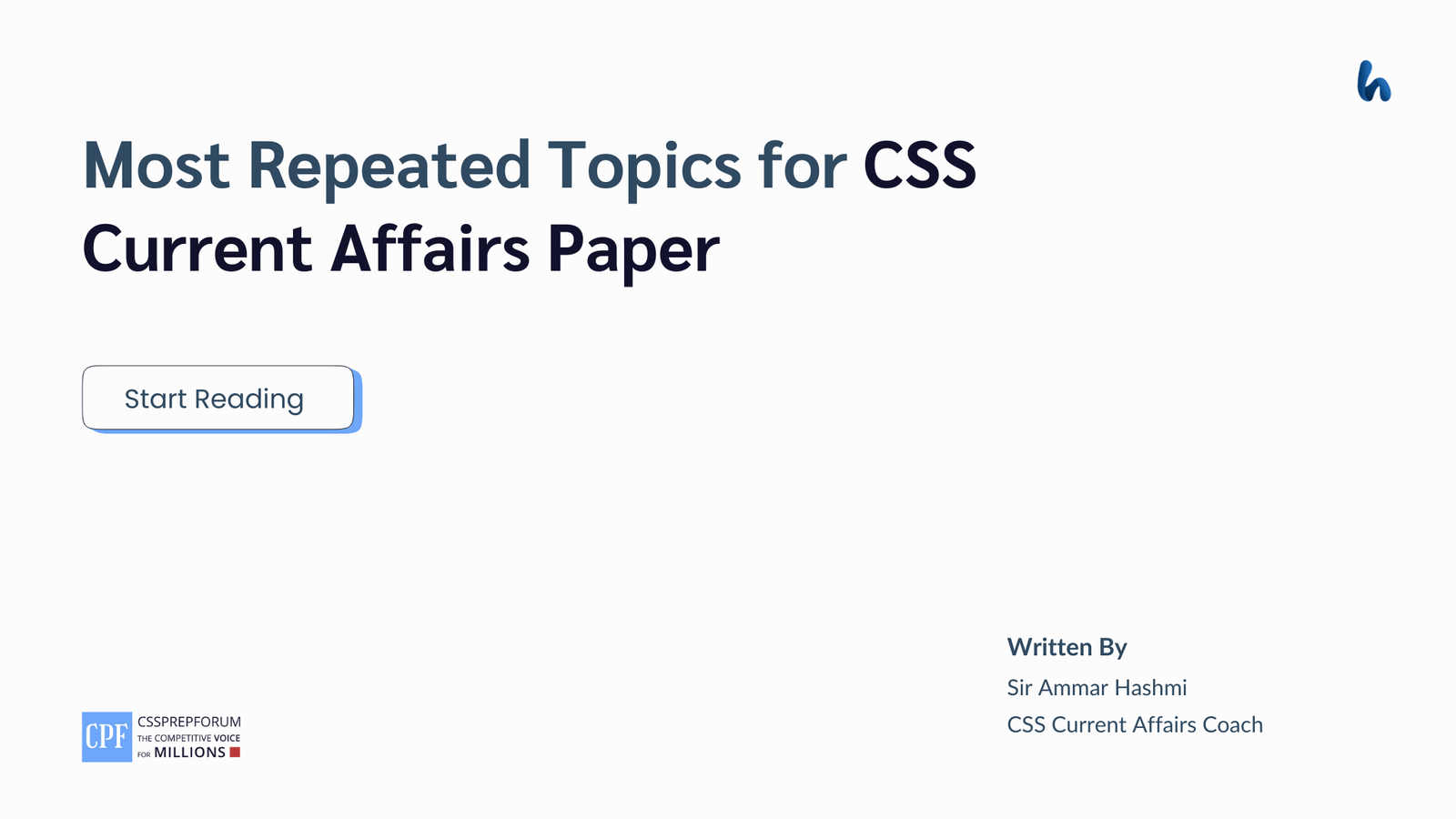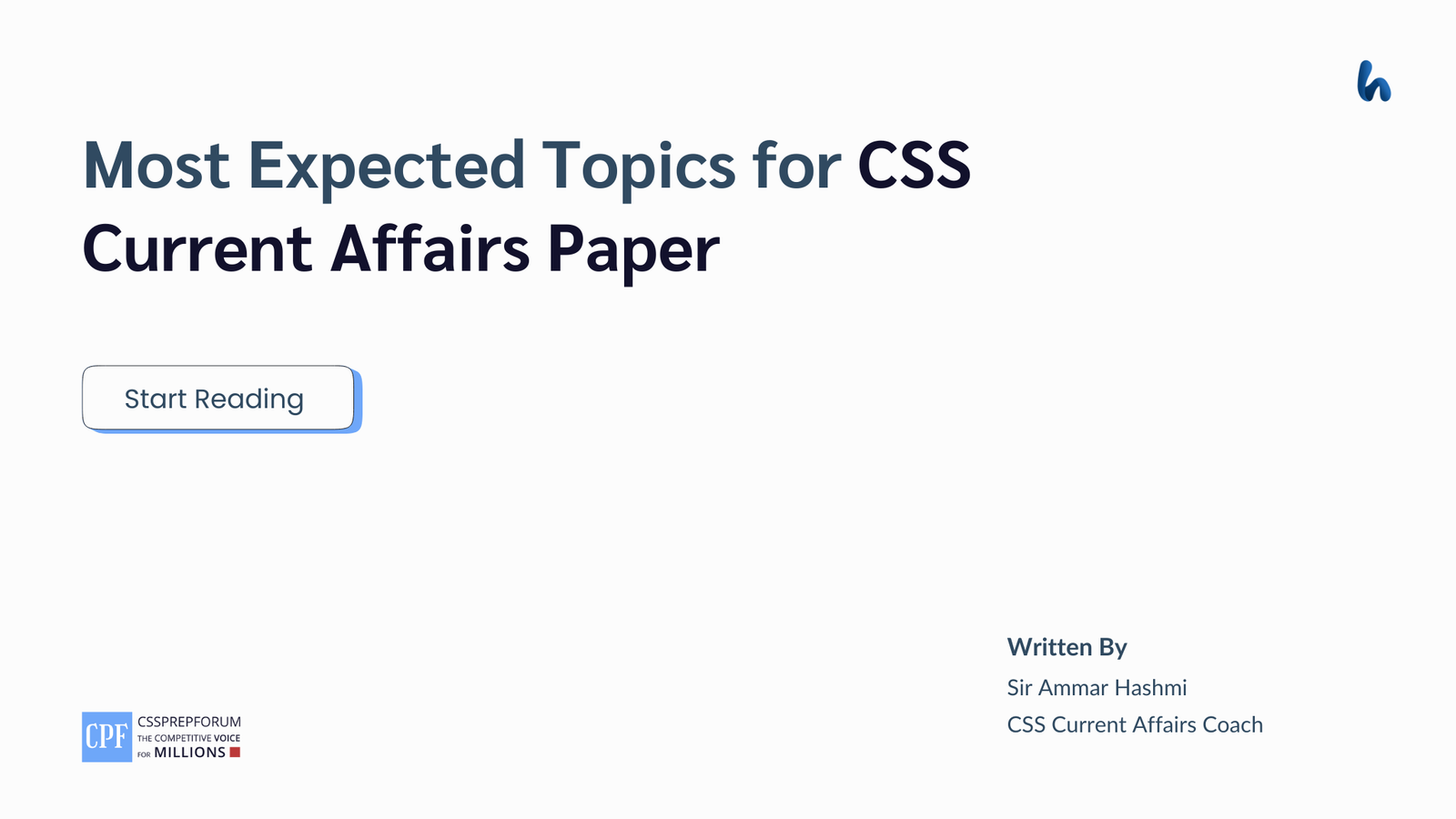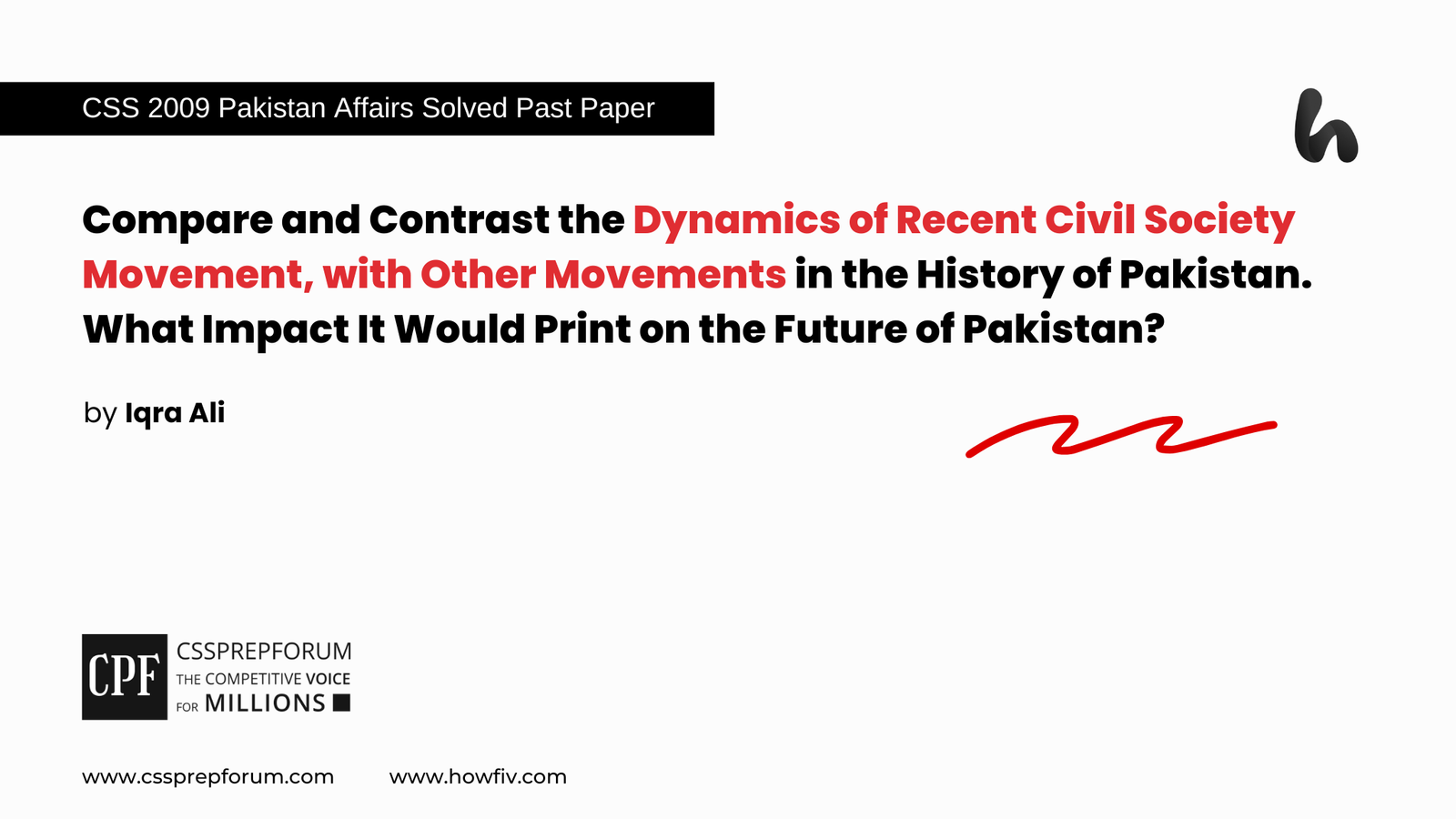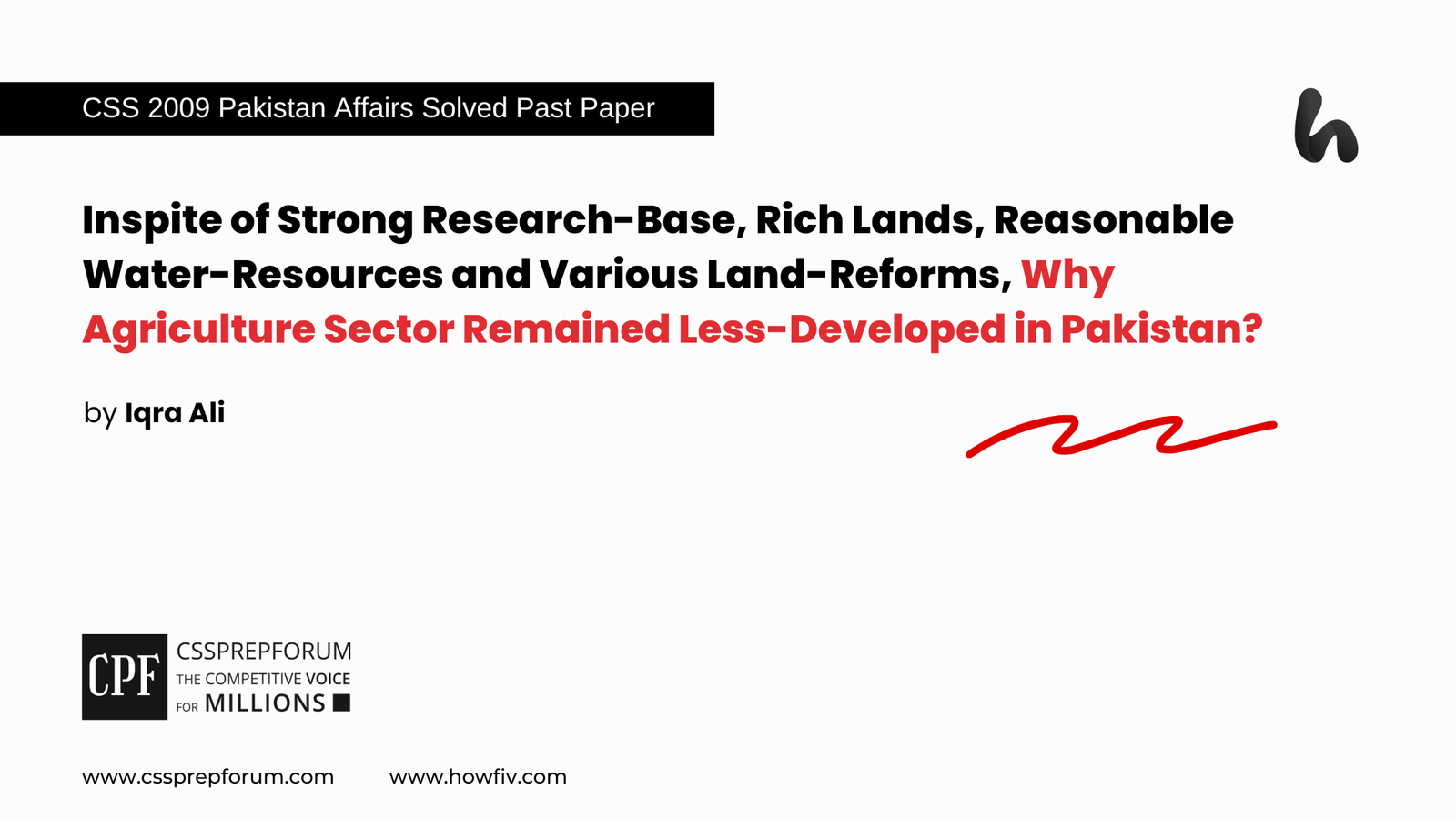CSS Solved Sociology Past Papers | What is meant by society? Discuss its types in detail. Also, define culture and what the difference is between material and non-material in social culture.
The following question of Sociology is attempted on the same pattern, taught by Sir to his students, scoring the highest marks in compulsory subjects for years. This solved past paper question is uploaded to help aspirants understand how to crack a topic or question, how to write relevantly, what coherence is, and how to include and connect ideas, opinions, and suggestions to score the maximum.

Question Breakdown
In this question, the examiner requires the meaning of society and its types in detail. It directs to explain the question with a sociological perspective along with the salient features of the society in detail. Additionally, the second part of the question demands the difference between material culture and non-material culture. It can be elaborated by the daily life examples and perspectives found in society.
Outline
1-Introduction
2- What is a society?
3- Salient Features of Society
4- Types of society
- Rural society (Gemeinschaft)
- Urban society (Geselleschaft)
5- Evolution of society
6- Society w.r.t. sociological perspectives
- Functionalist perspective of society
- Conflict perspective of society
- Symbolic interactionism perspective of society
7- Define Culture
- Characteristics of culture
- Elements of culture
8- Sociological perspectives of culture
- Functionalist context of culture
- Conflict context of culture
- Symbolic interactionist context of culture
9- Difference between Material culture & non-Material culture
10- Synthesis
11- Conclusion

Answer to the question
Introduction:
Society is the total aggregate of people living in a limited geographical boundary having w common goals. It is the product of social relationships among individuals. Awareness is the necessary condition for social solidarity as groups in interrelation develop society through interdependence among individuals. People in society are influenced by the general culture as it has a vast network of social institutions. Cooperation and social solidarity are effective in society. Culture is the backbone as it sets the norms and values of society and regulates society. The material and non-material culture encapsulate the social infrastructure and cultural elements that are crucial for the survival of the human race. The evolutionary phase of society exclaims the role of culture in society subtly. Society and culture are part and parcel of each other by socialization agents interestingly.
What is a society?
Maciver and Page conceive society as a system of usages and procedures, of authority and mutual aid, of many groupings and divisions, of contests, of humans.
Society is the total social interaction with a large aggregate of people. It is a source of socialization. Economics, politics, education and family are the socialization institution that functions and builds the social network with a specialized division of jobs. Cooperation is the core idea to direct societal equilibrium outrightly.
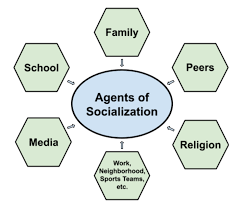
Salient features of society:
- having a specific culture with values norms and belief system
- language as a medium of communication
- social norms to enunciate the do’s and don’t’s
- values to regulate the societal functions
- education to impart the social control
- social change to adapt to the evolution
- social interaction for the exchange of information and survival by fulfilling the needs through cooperation
- Social institutions for the proper functioning of society and socialization including family, religion, education, economics, politics and mass media.
Difference between society &community:
It is important to understand the sui generis aspect of society by differentiating it from the community:
- society has its limited geographical boundary while the community has no rigidity
- the community has a face to face interaction which is impossible in a society
- society is abstract a general network of social relationships while a community is concrete
- common interests and objectives are not necessary for a society
Types of society:
| Rural society(Gemeinschaft) | Urban society(Geselleschaft) |
| Lifelong and kinship based on personal ties | People have little in common personal ties |
| In-person interaction | Indirect interaction |
| Senses of moral obligation towards others | Relationships are short-term and based on self-interests |
| Low population | A high proportion of the population |
| Integration | Low integration |
| Homogeneity | Heterogeneity |
| Religious affiliations | Centralization & rationality |
| Clean environment | Pollution, noise and busy life |
| Joint family system | Nuclear family system |
| Low literacy proportion | High literacy |
| Difficulty in accepting sociocultural change | Adaptive to social change |
| Lack of modern facilities | Modernization & urbanization |
| Weak economy | Focused monetary investments and blockchains |
| Organic solidarity | Mechanical solidarity |
Evolutionary phase of society:
After surpassing several evolutionary stages society has reached the top spot of technology and science:

1- Hunting gathering society:
The source of living was a collection of wild plants and hunting of wild animals daily. Hunter-gatherers move around constantly in search of food. As a result, they do not build permanent villages or create a wide society of artefacts
2- Herding & Pastoral society:
Human beings learned the domestication of herd animals. They adopted nomadic life, moving their herds from one pasture to another. Because of reliable food supply, they could support larger populations and settle down in one place for extended durations of time
3- Agrarian society:
Technology advances to cultivate crops over a large area. Due to improved methods and surplus agricultural output was produced. This resulted in a greater population due to the supply of a large quantity of food. Creation of permanent settlements, towns, and centres of trade. Social institutions such as religion and education started to get formalized
4- Industrial society:
The industrial revolution gave birth to the manufacturing sector. People started moving from rural lands to urban areas to work n factories. Industrial output was increased significantly due to scientific methods. As a result, the human lifestyle has also considerably improved. The question of identity and relationships took a whole new turn in an industrial society.
5- Post-industrial society:
It features an economy based on services and technology (internet).focus of ideas exclaims that tangible goods no longer drive the economy. Need for high education is necessary as factory work does not require advanced training, and the new focus is established on information and technology means that people must pursue higher education. Shift in the workplace from cities to homes created a space for new technology and communication via optic fibres.
Society w.r.t. sociological perspectives:
This sociological perspective attempts that why society functions the way it does by focusing on the relationships between the various social institutions that make up society:
A- Society w.r.t. functionalist perspective:
proponents: Emile Durkheim, Talcott Parsons, Herbert Spencer
- society is like a biological organism with internal components
- Each social structure serves some function
- Supportive of the status quo
- Society constantly strives to be in a state of equilibrium
b- Society w.r.t. conflict perspective:
Proponents: Karl Marx, Antonio Gramsci
- Society is in a perpetual state of conflict
- Elites maintain power through the opium of the masses
- Conflict as an engine of social change
C- Society w.r.t. symbolic interactionism:
Proponents: Robert k. Merton, Herbert Mead
- Focus on the interaction among individuals via differential association and learning process
- Shared definition regarding social integration as well as deviation
- The importance of subjective meaning articulates the procedure of labelling theory and social problems
Define Culture:

Culture is a continually changing pattern of learned behaviour which includes knowledge, belief, art, morals, laws, customs and any other capabilities and habits acquired by man as a member of society. Through culture, people and groups define themselves, conform to society’s shared values and contribute to society. (Edward Burnett Tylor in his book primitive culture)
Elements of culture:
The following are the elements of culture:
1. Norms:
These are the rules and expectations by which a society guides the behaviour of its members. It can be prescriptive or proscriptive. William graham sumner: Moores are the norms that are highly significant and break down of such norms can result in a severe response from society. Folkways are norms that are not significant rather they represent rules related to practices of everyday interaction.
2. Values:
Horton & hunt defines values as ‘ideas about whether experiences are important or unimportant’. For example, the key values in Pakistan are caste and superiority, hospitality, materialism, and simplicity.
3. Beliefs:
Macionis defines beliefs as specific ideas or thoughts that people hold to be true. For example, it is a belief that whoever works hard becomes successful.
Characteristics of culture:
- Culture is learnt in multiple ways because it is not inherited.
- Culture is social means it implicates social interaction, and thus the socialization process nurtures the personality of an individual.
- Culture is shared via customs, traditions, beliefs, ideas, values and morals
- Culture is transmissive from one generation to another .it can be intergenerational and intra-generational.
- Culture is continuous and cumulative means growing whole. It can be conceived as a kind of stream flowing down through the centuries from one generation to another
- Culture is consistent and integrated into its development because different parts of culture are interconnected. Change in one part of the culture will cause a change in the rest of the parts.
- Culture is dynamic and adaptive concerning changing dynamics.
- Culture is gratifying as it imparts human generations with all the necessities.
- Culture varies from society to society, comprising different nations that have different cultures at different times.
- Culture is super organic, and ideational means it is independent of physiological and physical properties and characteristics. For example, a flag means a nation.
- Culture is ideal for its society on the accord of its uniqueness.
Culture w.r.t. sociological perspectives:
The sociological perspective briefly defines the culture and is as follows:
A- Functionalist context of culture:
- Culture is the treasury of knowledge, for example, the works of Alfarabi, and Ibn-Sina.
- Culture defines identity and situation; for example, gender socialization in the family is influenced by culture.
- Culture provides behaviour patterns and regulates social norms by a mechanism of social control, for example, the etiquette of eating and greeting
- Culture moulds personality
- Culture sets the attitudes, goals and values; for example alcohol consumption in Pakistan
- Culture decides our careers, like politicians, bureaucrats, and religious leaders in Pakistan
- Culture regulates our production and consumption patterns like jeans in the USA, dhoti in Punjab, Sindhi Ajrak
- Culture regulates social stratification by caste and the baradari system in Pakistan and India.
B- Conflict context of culture:
Cultural hegemony and ideological state apparatus: Antonio Gramsci asserts that those who hold power define and perpetuate a culture’s ideology and create a value system that defines social inequality as just and proper
For example, the culture of slavery that existed in the USA before the civil war .it was allowed to exist because it benefitted rich white people.
C- Symbolic interactionist context of culture:
It implicates the social integration and deviation via social interaction and socialization agents which operates by a common goal and shared values.
Difference between Material culture & non-material culture:
| Material culture | Non-Material culture |
| It consists of man-made objects such as tools, furniture, automobiles, dams, roads, bridges and all the physical substances made by man. | Culture is a non-material and abstract object with the composition of values, norms, beliefs and social sanctions which are glue to bind a society |
| It is concerned with the external, mechanical and utilitarian objects | It is concerned with internal things and is intrinsically valuable, reflecting the inward nature of man. |
| It includes technical and material equipment like a printing press, a locomotive, a telephone etc | It consists of literature, faith, food, rituals, customs, traditions and values. |
| It refers to the civilization | It refers to identity and situation |
| It can be purchased and inherited | It cannot be purchased or inherited |
| It is tangible and can be touched | It is abstract in nature and sometimes associated with objects like the flag is a symbol of national identity |
| It can be shuffled and changed | It cannot be changed but is adaptive and modernised by sociocultural change |
Synthesis:
Society and culture are part and parcel of each other because man is a social animal. It is a medium to fulfil human needs significantly. The functionalist perspective exclaims the function of socialization agents that ultimately escalates the function and structure of society via cultural regulation. Similarly, change, adaptation and social action in society are coordinated by the conflict context, which utilizes culture as the key factor to articulated social interaction and social change. Along the same vein, social integration, as well as the deviation, is driven by sociocultural association, cultural assimilation, xenocentrism and ethnocentrism. In this way, the combined activity of human interaction, interdependence and interlinked age weaves a social network that is balanced by the culture.
Conclusion:
Quintessentially, society is the compound of social institutions and social groups. Socialization agents are a combination of social groups and social institutions that provide the first experiences of socialization. Families, early education, peer groups, the workplace, religion, government, and media all communicate expectations and reinforce norms. Culture, at the same time, is the force that regulates and coordinates social activities. It sets a code of conduct through social norms values and belief systems. Material culture is the tangible part of society while nonmaterial culture is the abstract part of the culture. The compact combination of society and culture is the agent behind the survival and adaptation of human civilization which is evolving and modernizing by socio-cultural change.
CSS Solved Past Papers’ Essays
Looking for the last ten years of CSS and PMS Solved Essays and want to know how Sir Kazim’s students write and score the highest marks in the essays’ papers? Then, click on the CSS Solved Essays to start reading them.
CSS Solved Essays

CSS Solved General Science & Ability Past Papers
Want to read the last ten years’ General Science & Ability Solved Past Papers to learn how to attempt them and to score high? Let’s click on the link below to read them all freely. All past papers have been solved by Miss Iqra Ali & Dr Nishat Baloch, Pakistan’s top CSS GSA coach having the highest score of their students.
General Science & Ability Solved Past Papers
CSS Solved Pakistan Affairs Past Papers
Want to read CSS Pakistan Affairs Solved Past Papers and learn how to attempt them to score high? Let’s click on the link below to read them all freely. All past papers’ questions have been attempted by Sir Kazim’s students, who scored the highest in the subject.
CSS Solved Pakistan Affairs
CSS Solved International Relations’ Past Papers
Have you opted for International Relations in the CSS examination and want to score above 150? Then, click on the CSS Solved International Relations’ Past Papers by Miss Abeera Fatima, the top IR scorer and the best IR coach in Pakistan.
CSS Solved International Relations Past Papers
Articles Might Interest You!
The following are some of the most important articles for CSS and PMS aspirants. Click on any to start reading.



